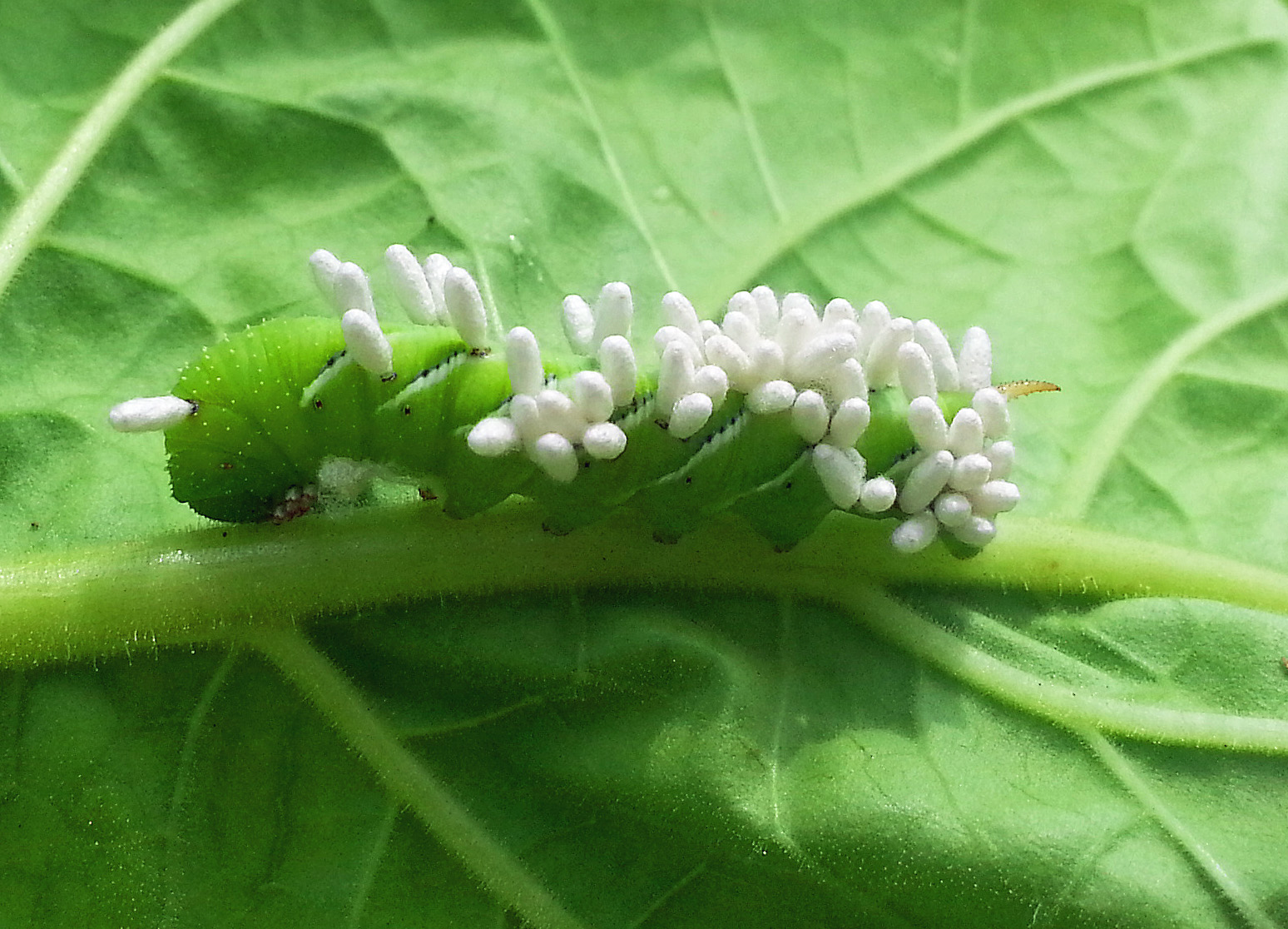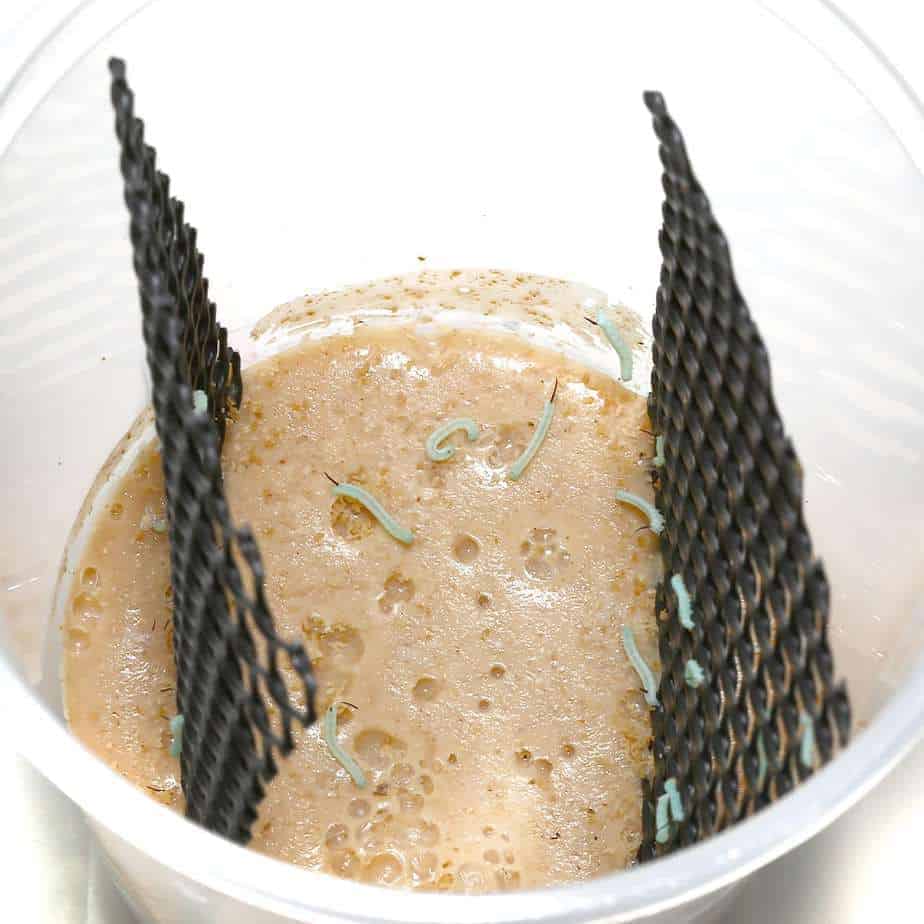
Put the eggs on the paper and reposition the cup (containing the solidified food and netting) over the lid. Invert the lid-inside facing up-on a table and line it with 2 sheets of tissue paper, filter paper, or paper towels. Use a paper hole punch or other instrument to punch 4 holes through the lid. The netting helps support the food when the cup is inverted and allows a surface for the larvae to climb to reach the food. Place plastic netting in the cup with one end extended into the food. Allow liquid diet to solidify in the cup before continuing. Whether liquid or solid, the layer of food should be no deeper than 7 to 10 mm (about ¼ to ⅜") deep.

Pack down the solid diet until it creates a good seal in the bottom of the cup. Either pour liquid diet into the bottom of the cup or use a spoon to add a layer of solid diet to the bottom of the cup. You can easily construct a hatching chamber for 30 to 50 eggs using a plastic cup with a lid. It is best to hatch eggs on an artificial diet. If you live outside of Iowa please do not submit a sample without contacting the Plant & Insect Diagnostic Clinic.Your hornworm eggs will arrive in a small, plastic vial. Please see our website for current forms, fees, and instructions on preserving and mailing insects.Ĭontact information for each states diagnostic laboratory for U.S. The Iowa State University Plant & Insect Diagnostic Clinic will identify your insect, provide information on what it eats, life cycle, and if it is a pest the best ways to manage them. Do you live in Iowa and have an insect you would like identified? When hornworms are observed, handpicking is usually sufficient control action. Carefully watch for larvae and feeding from June to harvest. Parasitism and other natural factors keep hornworm populations sufficiently low in most gardens. Hornworms blend in with the foliage and are difficult to see until much defoliation has occurred. Ravenous leaf feeding by hornworm larvae may result in extensive defoliation.


A hornworm can eat a considerable amount of foliage that may look like severe damage, but actual yield loss is probably slight. The well–known tomato hornworm is more often a curiosity in gardens rather than a pest, though outbreaks have been known to occur. The larvae feed on the foliage for 4 to 5 weeks before growing to the commonly–seen size of 3 to 4 inches long. The adult hawk moths emerge in mid- to late June and lay eggs on the lower side of host plant leaves. The insect spends the winter in the soil as a large, brown pupa. Both species have diagonal white stripes along the sides of the body. The short, slender horn on the tip of the abdomen is red on the tobacco hornworm and green on the tomato hornworm.


 0 kommentar(er)
0 kommentar(er)
